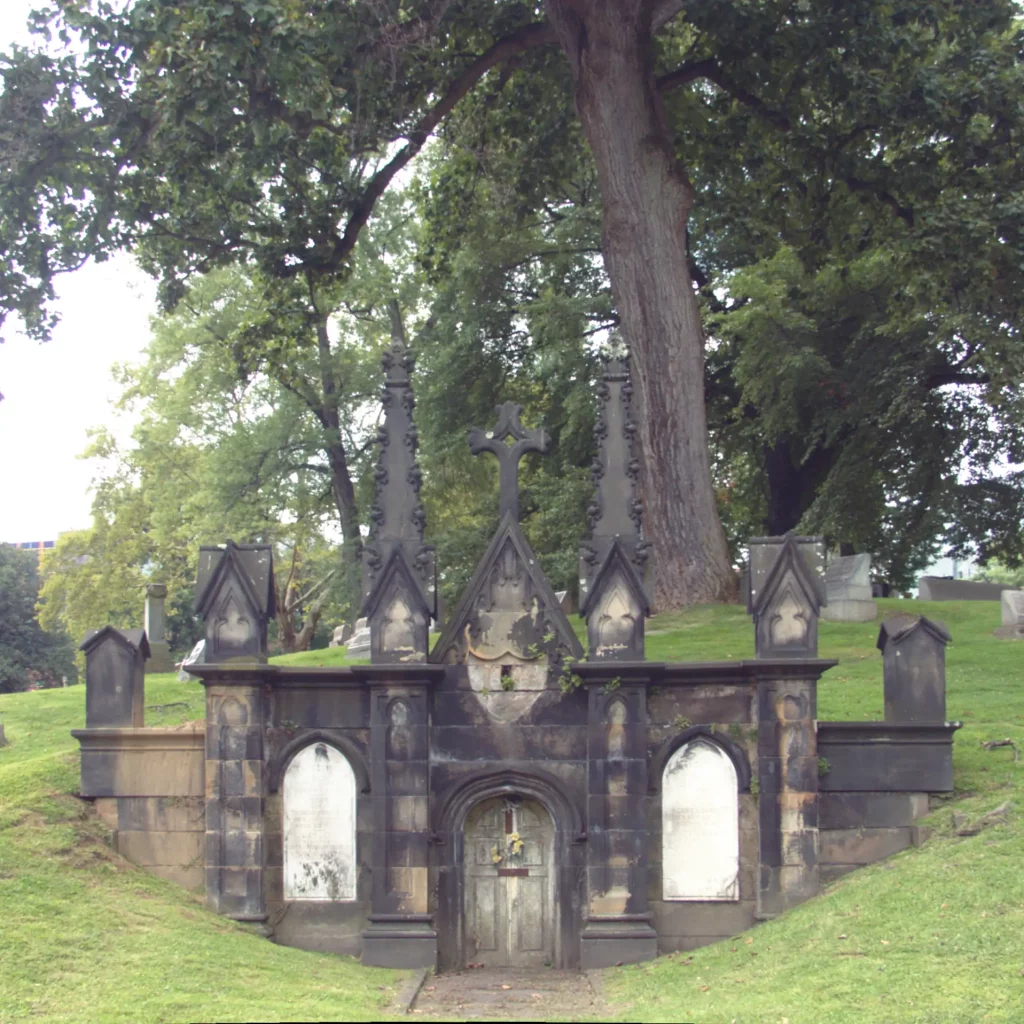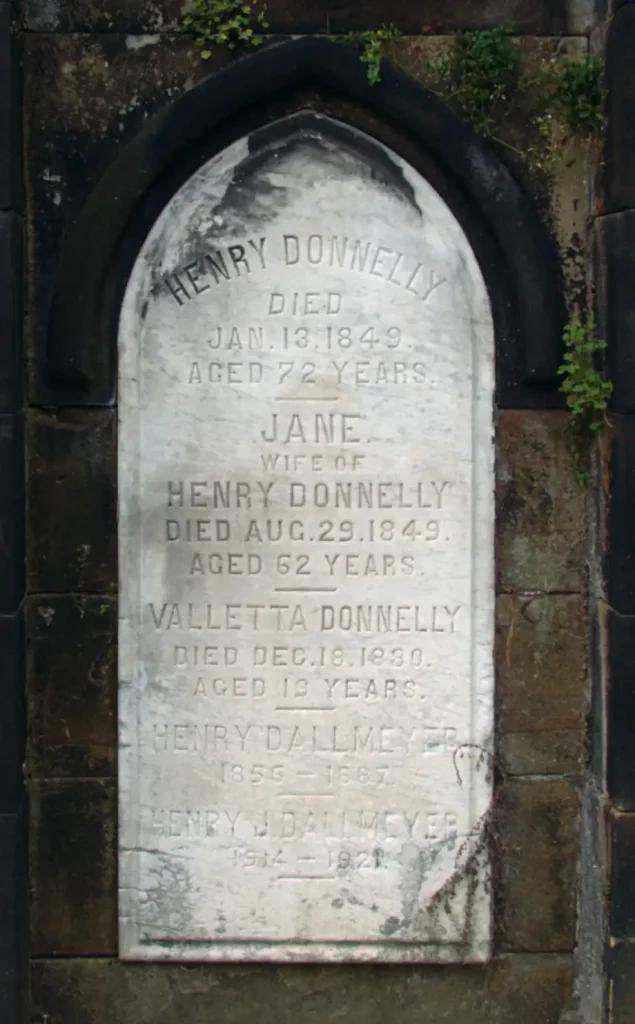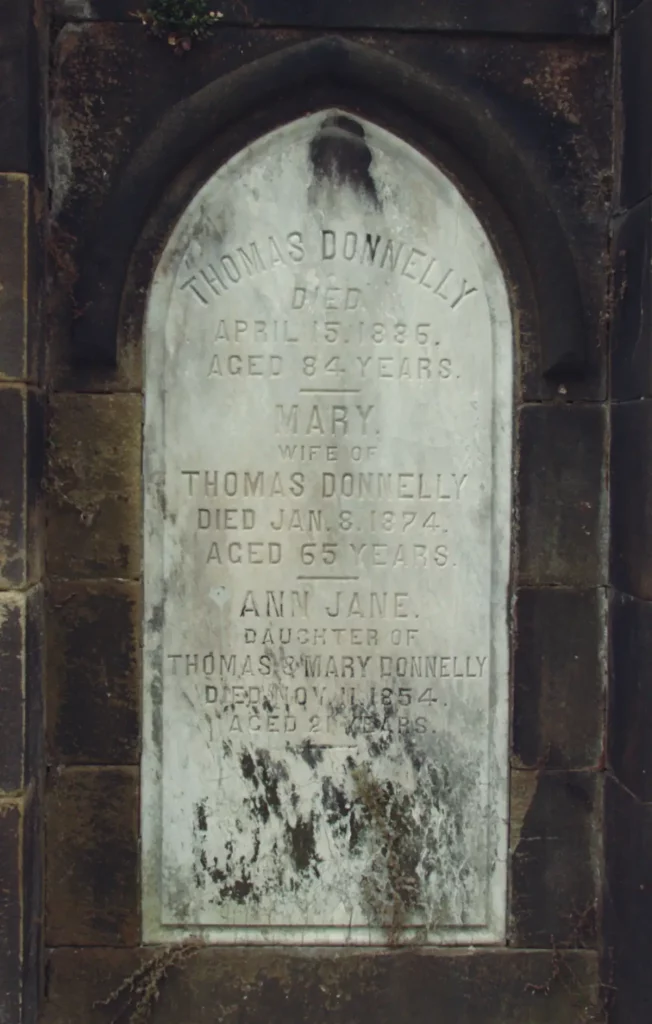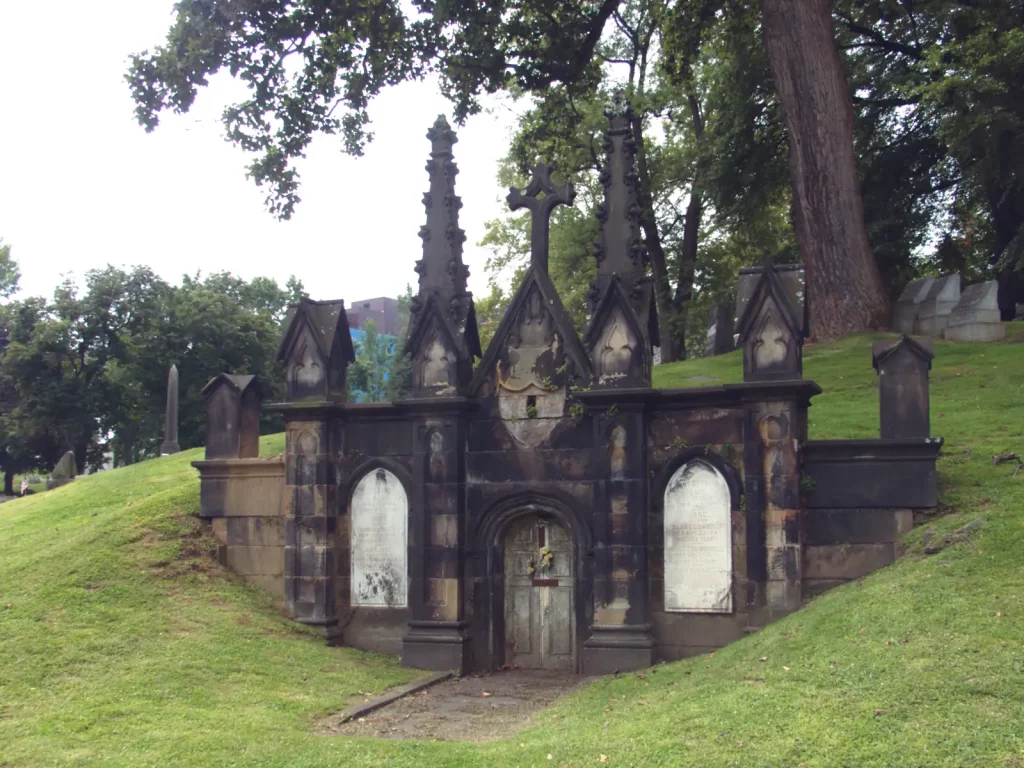
From front to rear, Hugh Boyle, Regis Canevin, Richard Phelan.

Bishop Boyle.
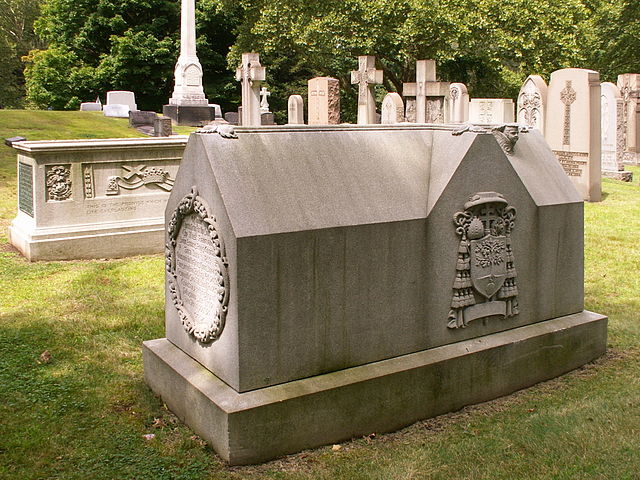

Bishop Canevin.


Bishop Phelan.
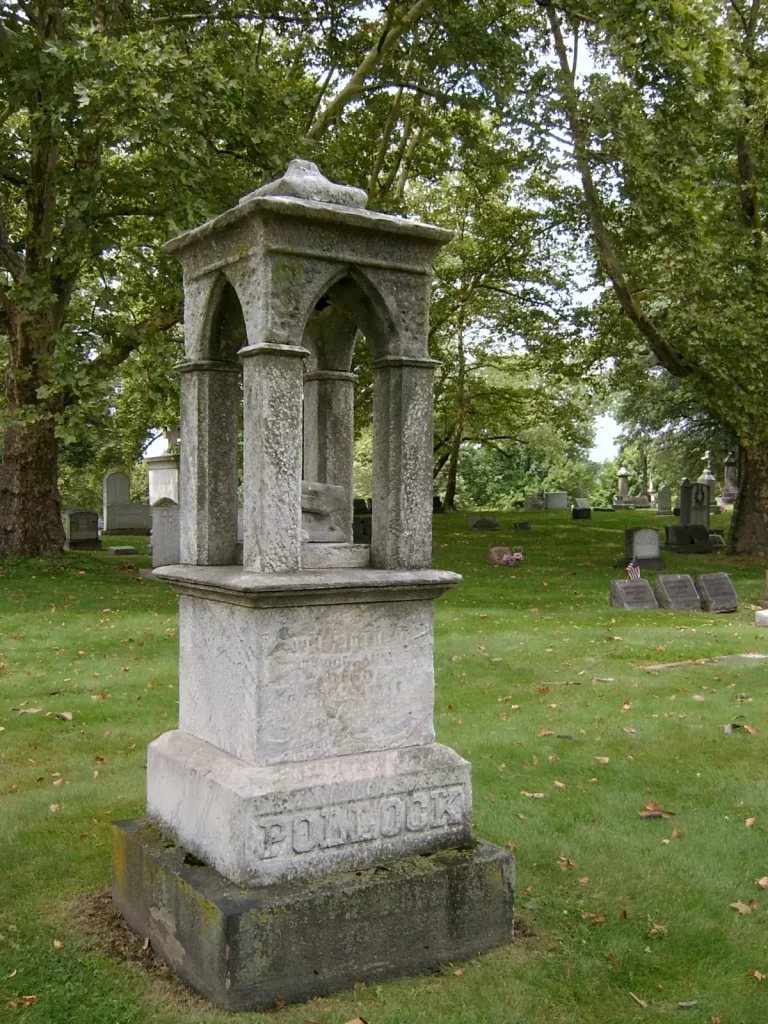
A Gothic shelter for a statue that has disintegrated into unrecognizable bits of stone. The inscription is almost obliterated, but it seems to give a death date of 1851, which is plausible for this style of monument.

This elaborate and delicate Gothic monument is falling to pieces. It once sheltered some sort of statue that is now completely unrecognizable. The base is engraved with the names of two Hills who died in 1920 and 1929, but Father Pitt guesses that the monument dates from the 1870s or before.
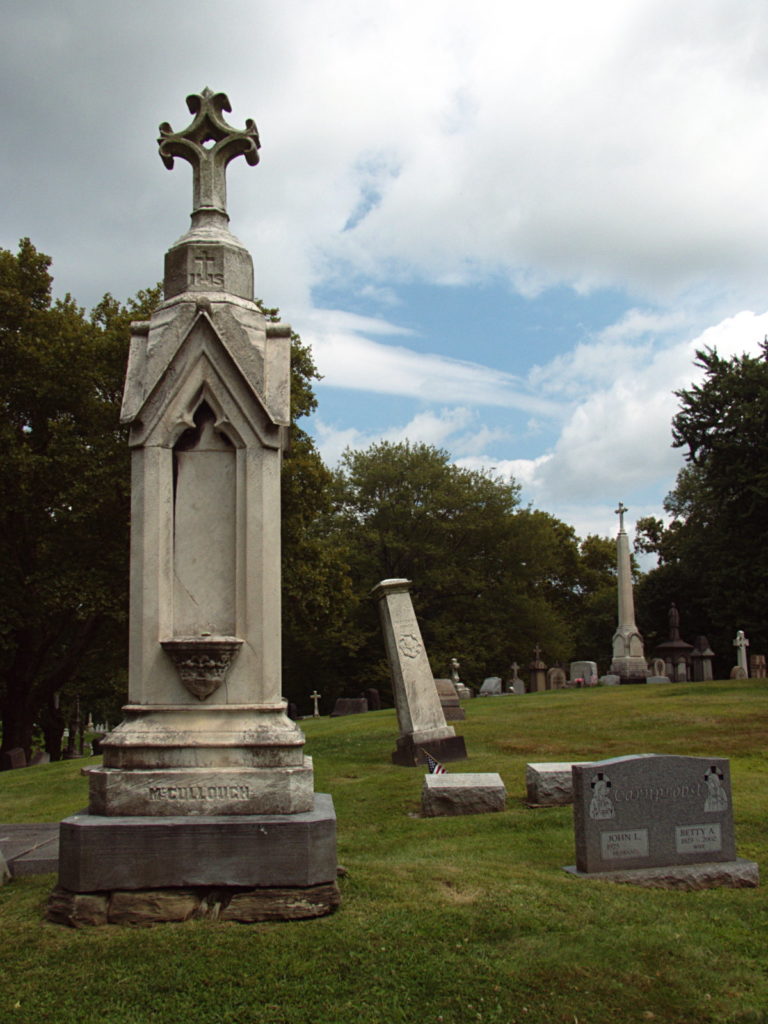
Perhaps one of the oldest monuments in the cemetery, which opened in 1849, the year Michael McCullough died. It is a striking and harmonious Gothic composition whose prominent cross seems an organic part of the design rather than an afterthought.
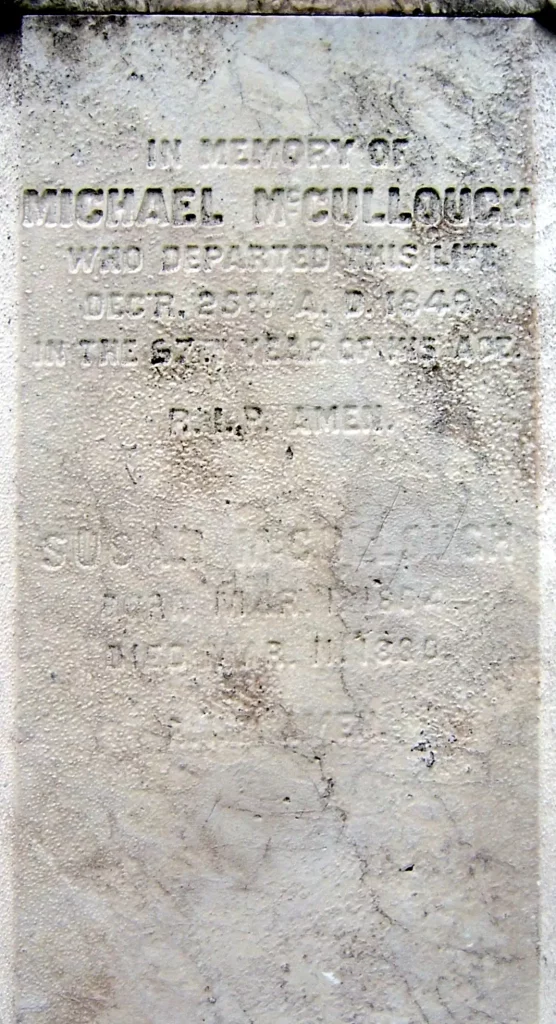
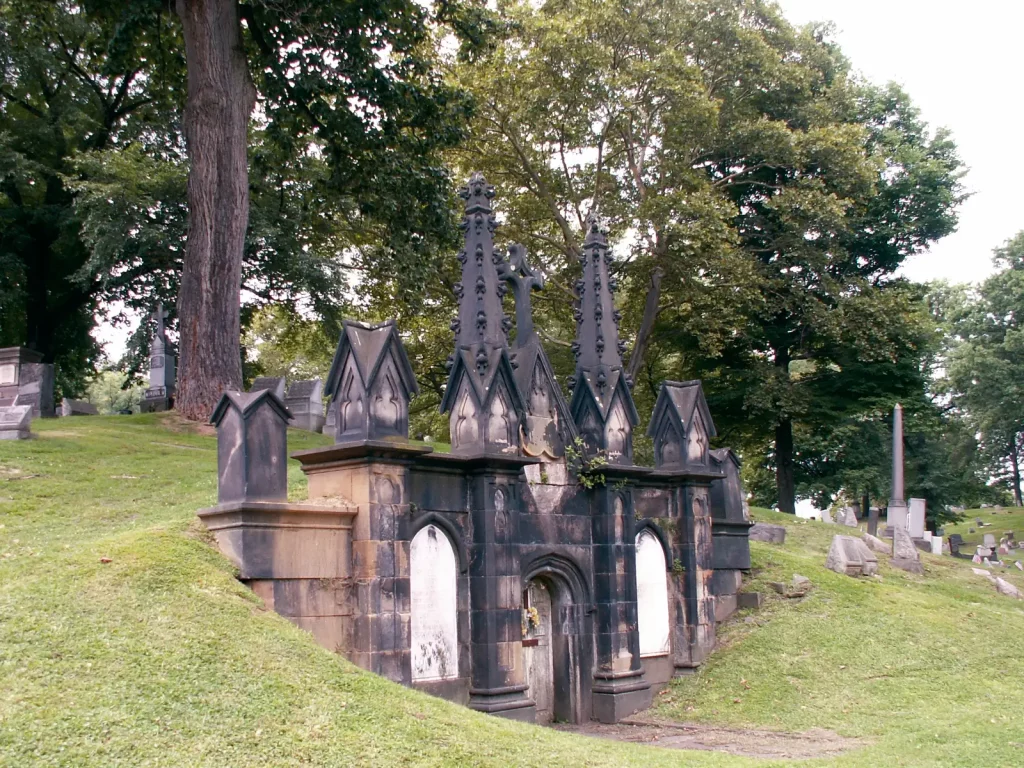
This must have been one of the earliest interments in the cemetery, which opened in 1849, the year Henry Donnelly died. It is certainly grand, and more than a little mysterious—perhaps the most striking in-ground mausoleum in Pittsburgh. In the early and middle nineteenth century, these mausoleums cut into a hillside were the usual resting places of the rich; they are always referred to as “mausoleums,” anyway, but perhaps they would more properly be called tombs, reserving “mausoleum” for a free-standing building. They fell out of favor by the 1870s or so, and proper mausoleums came into fashion.
